The Standard Model Is An Orphan Theory Now

Only the best physical theories outlast the minds that invented them.
Throughout the 20th century, a number of discoveries revolutionized our Universe. The discovery of the interior structure of atoms as well as radioactivity led to the quantum revolution, exposing the bizarre and counterintuitive rules that nature plays by at a fundamental level. The birth and growth of experimental particle physics led to enormous theoretical developments, enabling everything we observe to be represented as composites of indivisible quanta. At last, in the late 1960s, the final theoretical pieces of our quantum Universe were put into place, completing what we know today as the Standard Model. More than half a century later, every prediction it’s ever made has been borne out by experiments, with no conflicts at all.
Arguably the single most important person in completing the theoretical development of the Standard Model of elementary particles was Steven Weinberg. On July 23, 2021, he passed away at the age of 88, leaving behind a rich legacy of accomplishments spanning a wide array of topics in theoretical physics. Although he may have left this world, his contributions are destined to vastly outlive him, as they’re now central to not only physics itself, but have been highly influential and educational to generations of physicists. Even though the Standard Model is now an orphan theory, having outlasted its primary architects, its reign as the most successful theory in the history of science continues, and so shall the legacy of Weinberg’s contributions to the field. Even to physicists and physics students who never got the opportunity to know him personally, his lasting influence has been nothing short of titanic.
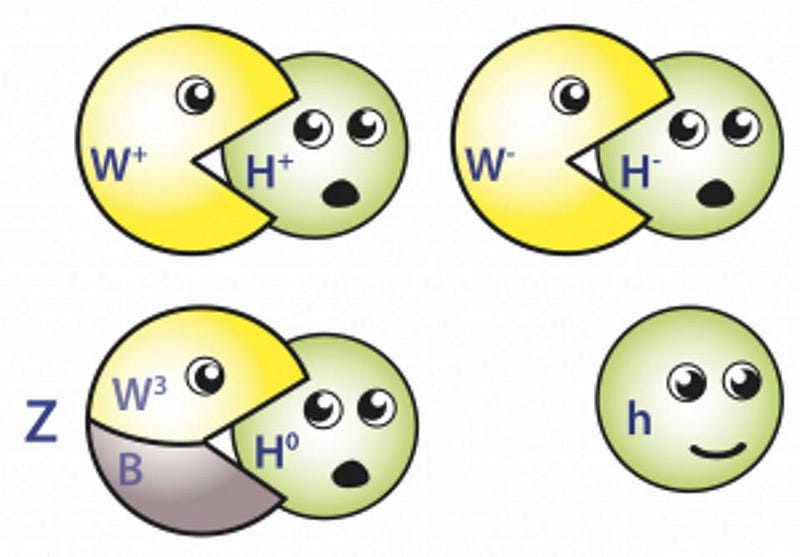
A model of leptons. In 1967, Weinberg submitted an under-three-page paper that — for the first time — correctly surmised the particle structure of electroweak unification. The big issue at the time was that any broken symmetry inevitably results in the generation of at least one massless gauge boson, known as a Goldstone boson. But in order to explain radioactive decays, as well as the other effects of the weak force, a massive set of spin-1 bosons needed to exist. This was the problem that Weinberg set out to address in his paper, simply titled, “A Model Of Leptons.”
Weinberg began by hypothesizing an unbroken, unified, more symmetric state that appears at high energies, then breaks at some lower energy scale to produce the weak and electromagnetic forces we see today. What Weinberg showed was that if the photon and the intermediate-boson fields serve as the gauge fields — which they do in the case of the Higgs mechanism — then that broken symmetry can lead to:
- a massless photon,
- a heavy set of three bosons that serve as the force carrier for the weak charge,
- the leftover Higgs boson
- and a specific set of highly constrained properties for how electrons and muons would couple to these forces.
Although many others made very important contributions to the puzzle, Weinberg was the first to put the theoretical pieces together to create what we know today as “the Standard Model.” In all the particle physics experiments that have come since, not a single one has disagreed with its predictions.
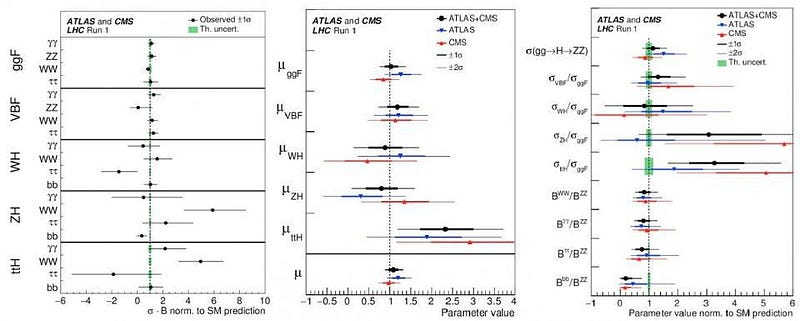
Weinberg’s mechanism was not only prescient, but correct. Even his initial proposal, about which he cautiously wrote, “Of course our model has too many arbitrary features for these predictions to be taken very seriously…” turned out to be wildly successful. The discovery of the W-and-Z bosons — the latter of which even owes its name to Weinberg — vindicated the notion of unification, as did their large masses which, indeed, appeared at the same mass scale as predicted. In 1973, the neutral current interactions were experimentally observed at CERN, again precisely as Weinberg had predicted.
For better and for worse, the success of this approach led to many subsequent attempts to create a more unified extension to the Standard Model. The various grand unified theories, the impositions of additional symmetries like supersymmetry, and the rise of (super)string theory all followed the same procedure that led to the formulation of the Standard Model. Weinberg greatly approved of this approach and even wrote a book lauding it: Dreams of a Final Theory. With Weinberg’s death, Sheldon Glashow — who shared the 1979 Nobel Prize with Weinberg and Abdus Salam, and who’s as disenchanted by String Theory as Weinberg was excited by it — stands as the last remaining scientist connected to electroweak unification.

The first three minutes. With the Standard Model now in place to describe the forces, particles, and fields that permeate the Universe, the next logical step was to combine our knowledge of particle physics with our knowledge of gravitation and the Universe. No, not by trying to build a theory of everything, but rather to apply our knowledge of particle physics to the earlier, hotter, denser stages of the Universe. Since the Universe we observe is expanding and cooling today, the Big Bang tells us it was hotter, denser, and more uniform in the past.
Working out the scientific predictions for what we expect the early Universe to be like — and how that translates into properties we can potentially observe today — became an incredibly important line of research, leading to the modern research fields of physical cosmology and astroparticle physics. And, like many scientists who went on to specialize in these fields, the book that introduced me to these concepts and how they related to the Universe was Steven Weinberg’s 1977 popular book, “The First Three Minutes.”
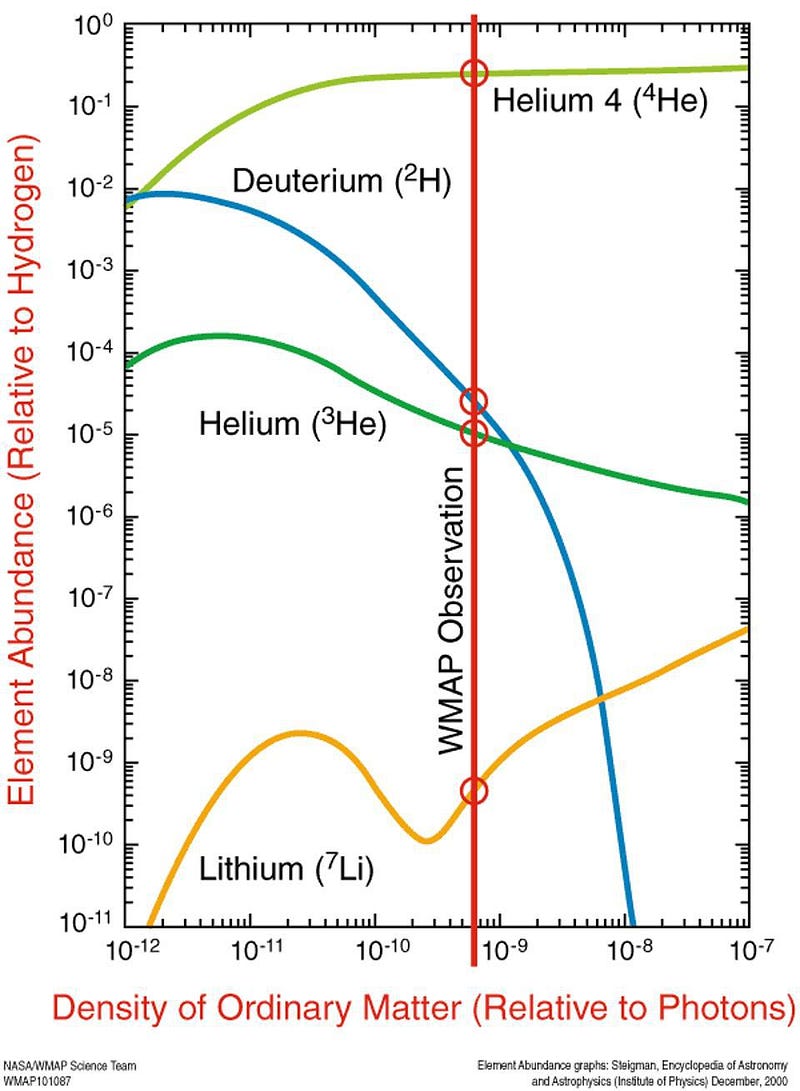
Like many of my contemporaries, this book was my first introduction to the Big Bang in a gory level of detail that really allowed me to sink my teeth into it. The hot-and-dense Universe, when it was very young, had equal amounts of matter and antimatter. As it cooled, the excesses annihilated away, leaving only the excess amounts of matter. During those first three minutes:
- protons and neutrons interconvert into one another through interactions with electrons and neutrinos,
- the neutrinos stop interacting as the weak interactions freeze out,
- then the electrons and positrons annihilate away,
- then energetic photons prevent deuterium from stably forming,
- while free neutrons decay into protons,
- then finally the Universe cools enough so that deuterium can form,
- leading to fusion and the initial abundances of the light nuclei,
which remain, and can then measured subsequently, including even today. Although my professors at the time recommended Weinberg’s Gravitation and Cosmology as the book that I should “teach myself General Relativity with since we’re not offering it to undergrads this year” (a terrible idea, by the way), his better-written popular account was not only a far superior introduction to the subject, but was excellent preparation, from a conceptual viewpoint, for actually becoming a professional in the field.
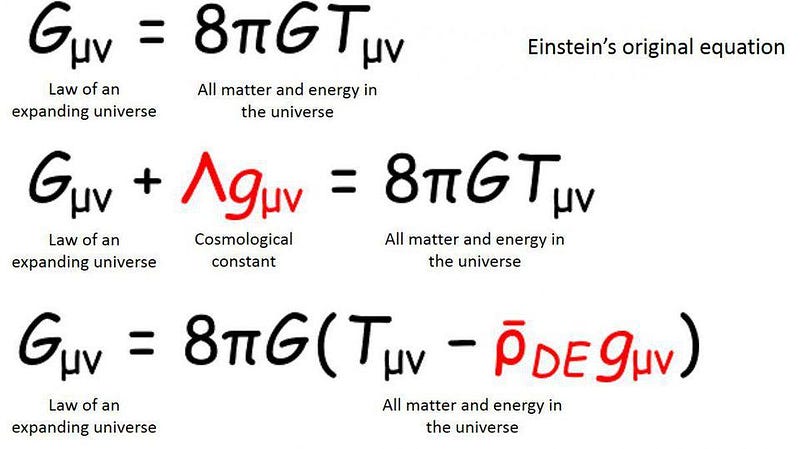
Empty space isn’t nothing. When he first put forth his theory of General Relativity, Einstein added in a term that was mathematically allowed, but that was physically ill-motivated: a cosmological constant. Noting that a static Universe filled with matter would be unstable, he added this parameter in to keep the Universe from collapsing, because without it, only expansion or contraction are allowed; you cannot remain unchanging. When we discovered the expanding Universe, we threw it away, where it remained for decades.
In the aftermath and completely independently, we developed quantum field theory, which states that every fundamental force has its own field associated with it, and those fields pervade all of space, whether there’s a charged source for that field present or not. We have prescriptions in quantum field theory for calculating the contributions of the effects of the different allowable interactions on particles, which allows us to make predictions for the outcomes of particle physics experiments. However, there’s another effect: these quantum fields contribute to the overall energy present in empty space itself, known alternately as the vacuum expectation value of empty space or as the zero-point energy of space itself. In terms of its effects, it plays an identical role in cosmology to Einstein’s cosmological constant.
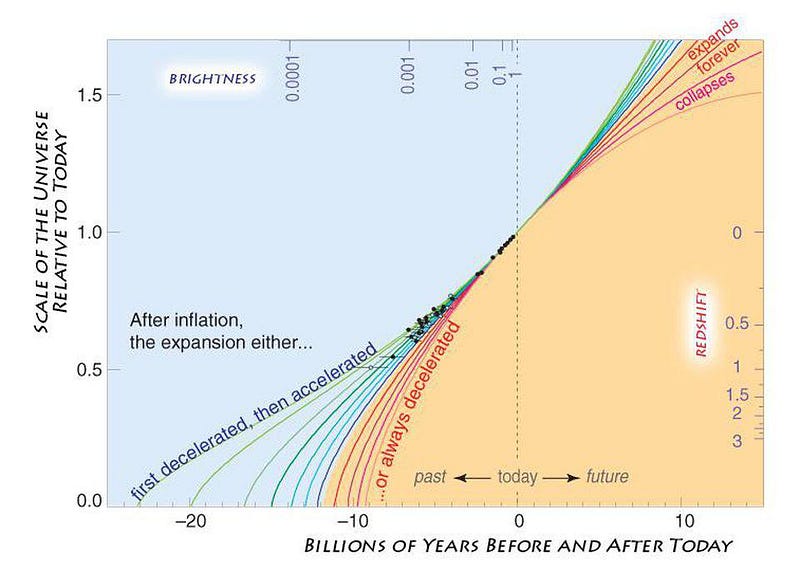
The problem is that, in the traditional approach, we either got nonsense (an absurdly large value that would have destroyed the Universe long ago, about 120 orders of magnitude too large) or assumed that all of those contributions were negligible, and somehow cancelled out to be zero.
In 1987, however, Steven Weinberg published a radical, remarkably different idea: that you could calculate the upper limit for the cosmological constant simply limited by the constraint that your Universe must allow gravitationally bound objects to form. What he found was that the limiting value was “only” 118 orders of magnitude smaller than the naive, absurd calculational result.
It led him to speculate that we should have a non-zero cosmological constant to the Universe, and that it wouldn’t be surprising if it were within one or two orders of magnitude of that limiting value. 11 years later, that’s precisely what we concluded about the Universe, confirming Weinberg’s speculative hypothesis that the zero-point energy of empty space isn’t zero after all, but rather has a small but significantly non-zero value. The nothingness of empty space isn’t exactly in line with our ideas of “nothingness” after all.
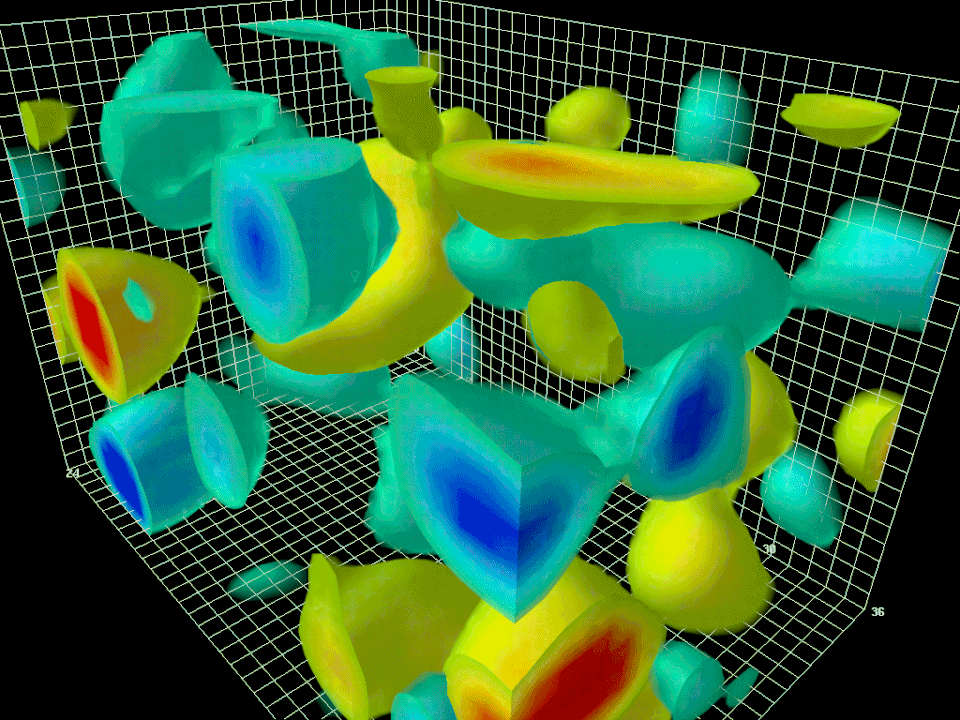
Effective field theory. This one is generally underappreciated even within the field of physics, but its importance cannot be overstated. When we’re speculating about theoretical scenarios that cannot be directly tested by experiment, we need some way to find a way to extract meaningful, phenomenological predictions. While some physicists prefer to play a game of “guess the theory exactly,” that’s often unproductive, as it’s unnecessarily overly complex to do so.
Instead, a far superior approach — at least in terms of extracting meaningful predictions that might impact indirectly related observables — is to use a simplified model that captures the most important properties of the theoretical idea at play: a toy model. We use this approach all the time, including in modeling phenomena like cosmic inflation or extra dimensions, in order to help us understand how various measurable parameters will be affected by different scenarios. This kind of work has allowed us to place tremendous constraints on which incarnations of various ideas remain viable, versus which ones can be dismissed without further consideration.
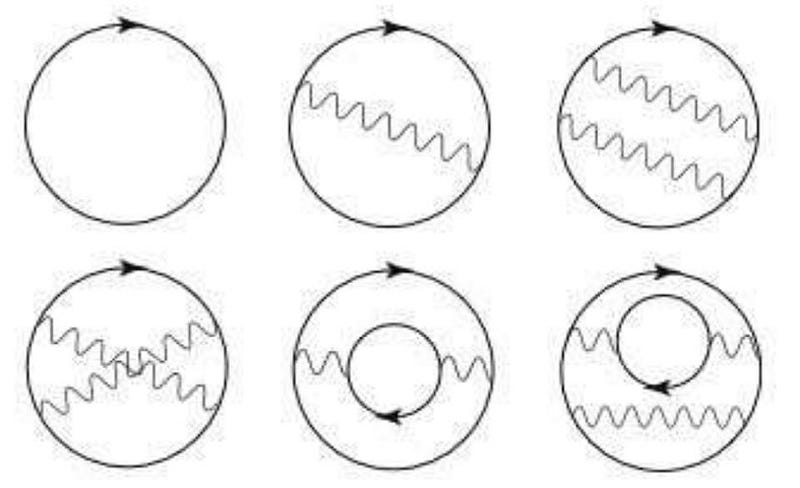
This basic idea states that instead of working with (and needing to know) the exact quantum field theory underlying the phenomenon we’re investigating, we can use a simplified model of that field theory: an effective field theory (EFT), instead. Even though Weinberg coined the term and many of us use it in the context of other quantum theories, he himself noted that it’s absolutely essential, in his mind, to approaching quantum gravity.
“My thinking about EFTs has always been in part conditioned by thinking about how we can deal with a quantum theory of gravitation. You can’t represent gravity by a simple renormalizable theory like the Standard Model, so what do you do? In fact, you treat general relativity the same way you treat low-energy pions, which are described by a low-energy non-renormalizable theory…
I showed how you can generate a power series for any given scattering amplitude in powers of energy rather than some small coupling constant. The whole idea of EFT is that any possible interaction is there: if it’s not forbidden it’s compulsory. But the higher, more complicated terms are suppressed by negative powers of some very large mass because the dimensionality of the coupling constants is such that they have negative powers of mass, like the gravitational constant. That’s why they’re so weak.”
In other words, working with effective field theories allows you to understand how various terms and phenomena contribute to what you’re attempting to observe, even when you don’t (or can’t) work with the full theory in all its gory details.
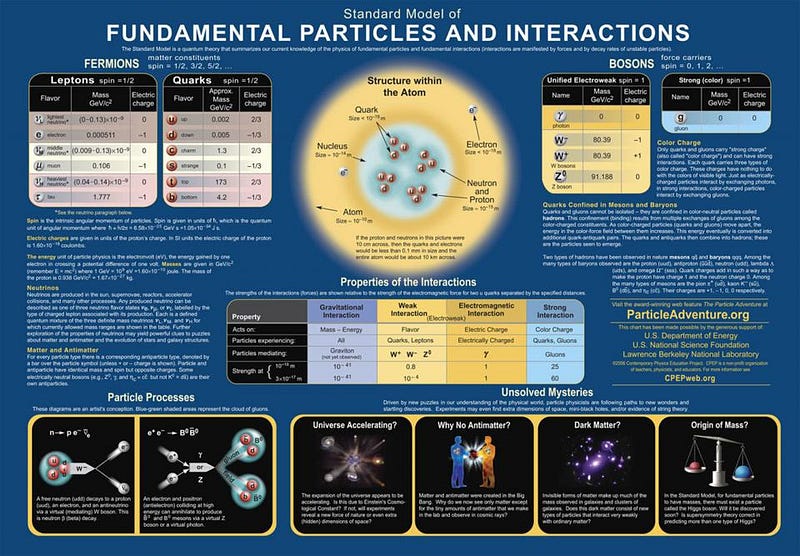
There’s no good way to sum up a human life in just a single article, particularly when it’s someone who you felt connected to in many ways but never met. Steven Weinberg went to the same high school as I did (albeit 46 years earlier), wrote many books and papers before I was born that I’d later study and learn from, and remained an active and influential figure right up until his death. He’s also an icon in the atheist, Jewish, and philosophical reductionism communities, among others, as well as for his most famous achievement: completing the most successful scientific theory in history, the Standard Model of elementary particles.
It’s unfortunate — and true — that we have no idea if the approaches we’ve taken to get to this point will take us any further in our endeavors to understand the Universe. Despite all the tools and techniques we’ve developed, we have no way of knowing which of our current ideas, if any of them, will help point the way towards unraveling our greatest scientific mysteries today. Does the strong force ever unify with the electroweak force? Is there a quantum theory of gravity, and if so, what does it look like? What caused inflation and what were its properties? What are dark matter and dark energy? These are the existential questions plaguing physics and astronomy here in 2021, questions we had no ability to ask when Steven Weinberg began his career.
From then until now, it’s been a remarkable journey, and we had him with us to help not only blaze that trail, but to bring so many of us along with him for the ride. The next steps, without him, will be that much more difficult to take.
Starts With A Bang is written by Ethan Siegel, Ph.D., author of Beyond The Galaxy, and Treknology: The Science of Star Trek from Tricorders to Warp Drive.





